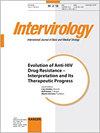A Meta-Analysis on Human Papillomavirus Type Distribution among Women with Cervical Neoplasia in the WHO Eastern Mediterranean Region
IF 3.2
4区 医学
Q3 VIROLOGY
引用次数: 11
Abstract
Introduction: To date, the human papillomavirus (HPV) vaccine has not been integrated into the national vaccination program of most countries of the WHO Eastern Mediterranean Region (EMRO), except for the United Arab Emirates and Libya. The knowledge of HPV genotype distribution in cervical neoplasia is valuable to predict the impact of current HPV vaccines on cancer prevention and can help the health policymakers to select the most appropriate vaccine types in their countries. Methods: Hence, this meta-analysis recapitulates all available data on HPV prevalence and genotypes in women with atypical squamous cells of undetermined significance (ASCUS), cervical intraepithelial neoplasia (CIN) I–III or low- and high-grade squamous intraepithelial lesions (LSIL and HSIL, respectively), and invasive cervical cancer (ICC) in EMRO countries. Results: The meta-analysis included 5,990 cases of cervical precancer and cancer. The overall HPV prevalence was 85.4, 71.3, 59.2, and 34.8% in women with ICC, CIN II–III or HSIL, CIN I or LSIL, and ASCUS, respectively. HPV 16 was the most common genotype followed by HPV 18, representing 58 and 16.5% in ICC cases, respectively. Conclusion: This meta-analysis showed that the introduction of current HPV vaccines into national vaccination programs and the establishment of comprehensive screening programs in EMRO countries is beneficial by preventing 74.5% of cervical neoplasia.世卫组织东地中海地区宫颈肿瘤妇女中人乳头瘤病毒类型分布的荟萃分析
简介:迄今为止,除阿拉伯联合酋长国和利比亚外,人乳头瘤病毒(HPV)疫苗尚未纳入世界卫生组织东地中海地区(EMRO)大多数国家的国家疫苗接种计划。了解宫颈瘤样病变中HPV基因型分布,有助于预测当前HPV疫苗对癌症预防的影响,并有助于卫生政策制定者选择本国最合适的疫苗类型。方法:因此,这项荟萃分析总结了EMRO国家患有不确定意义非典型鳞状细胞(ASCUS)、宫颈上皮内瘤变(CIN)I–III或低级别和高级别鳞状上皮内病变(分别为LSIL和HSIL)以及侵袭性癌症(ICC)的女性中HPV患病率和基因型的所有可用数据。结果:荟萃分析包括5990例宫颈癌前病变和癌症。ICC、CIN II–III或HSIL、CIN I或LSIL和ASCUS女性的总体HPV患病率分别为85.4%、71.3%、59.2%和34.8%。HPV16是最常见的基因型,其次是HPV18,在ICC病例中分别占58%和16.5%。结论:该荟萃分析表明,将当前的HPV疫苗引入国家疫苗接种计划,并在EMRO国家建立全面的筛查计划,有利于预防74.5%的宫颈肿瘤。
本文章由计算机程序翻译,如有差异,请以英文原文为准。
求助全文
约1分钟内获得全文
求助全文
来源期刊

Intervirology
医学-病毒学
CiteScore
5.40
自引率
0.00%
发文量
13
审稿时长
6-12 weeks
期刊介绍:
''Intervirology'' covers progress in both basic and clinical virus research, and aims to provide a forum for the various disciplines within virology. Issues publishing original papers alternate with thematic issues, focusing on clearly defined topics. This thematic concentration serves to make timely reviews, research reports and controversy easily accessible to both specialists in the field and those who want to keep track of the latest developments outside their own area of interest. In addition to original papers, regular issues publish short communications and letters to the editor to provide readers with a forum for the exchange of ideas and comments. The scope encompasses work on the molecular biology of human and animal viruses, including genome organization and regulation, and the structure and function of viral proteins. The pathogenesis, immunology, diagnosis, epidemiology, prophylaxis and therapy of viral diseases are considered.
 求助内容:
求助内容: 应助结果提醒方式:
应助结果提醒方式:


